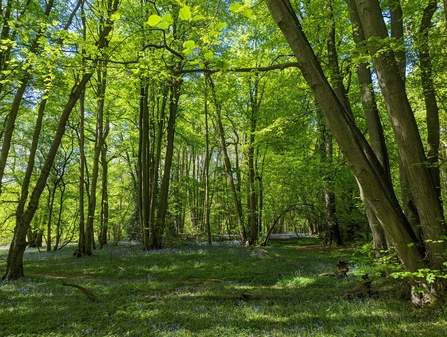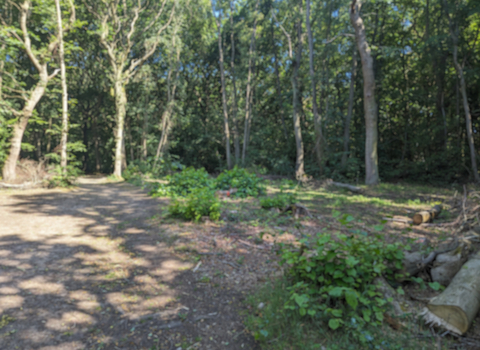Coppicing is a traditional method of woodland management that has occurred at Piles Coppice since as far back as the 11th century. Piles Coppice is special for its locally rare small-leaved lime trees which have been managed for timber in the woodland for at least 1000 years.
When this timber was harvested, the trees were cut down low, and the remaining stump (or 'coppice stool') grew multiple new shoots that were left to grow into larger trees before the cycle was repeated. This management prolongs the life of the tree, and many timber harvests could be taken from the same coppice stool over its lifetime.
The multipurpose small-leaved lime timber is excellent for carving, and the variety of structure created by coppicing trees around the woodland is great for many species of wildlife. Unfortunately, as the timber became less economical and demand reduced, most small-leaved lime coppices became neglected, leaving the coppice stools to grow much larger than they normally would.
Coppice management at Piles Coppice ceased in the mid-20th century, leaving the woodland to slowly lose its diverse structure and revert to a shady, even-aged woodland. This meant that coppice stools were not receiving the management needed to prolong their life and cultural heritage, and there was not enough light to encourage the growth of new trees from the woodland floor. Some of the stools had even begun to break apart under the weight of the tree stems which do not normally grow so large.

Overgrown lime stools and shady woodland floor in Piles Coppice
Warwickshire Wildlife Trust reintroduced traditional coppice management to Piles Coppice in 2022, to begin the process of improving the woodland structure and to bring back wildlife.
A small area was coppiced and monitored to confirm that the stools, which hadn’t been managed in such a long time, would regenerate as expected and send up new growth. So far, all the coppice stools have successfully regenerated and it is likely that the stools will continue to grow. The ground flora has also started to diversify with the additional light and warmth.
Having previously been bare ground in the summer (after the leaves appear on the trees and the bluebells die back), wildflowers such as violets have begun to germinate and spread along the woodland floor. As the coppice grows bigger, we expect the cleared area to respond similarly to other sites, providing structure and food for wildlife such as insects, scrub nesting birds and small mammals, before growing to a size where they can be coppiced again, a few decades into the future.




